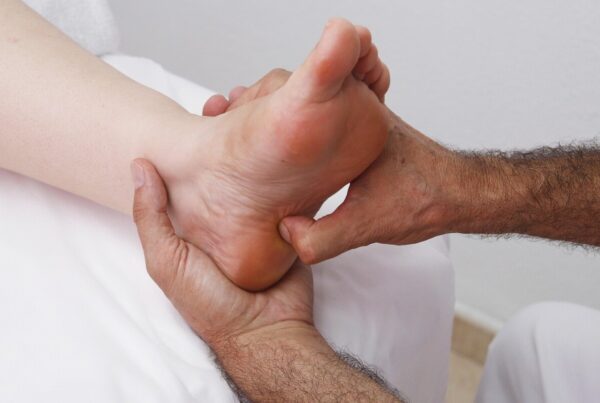Dizziness is a very common symptom we often see reported by patients during a Physiotherapy Assessment. There are a number of causes for dizziness, the most common cause accounting for 54% of dizziness presentations is Vertigo.
Vertigo is defined as an illusory sensation of motion of either the self or the surroundings in the absence of true motion. There are also many differing causes of vertigo, just to make things even more complicated, which require differing medical management and physiotherapy treatment.
This blog today will discuss Benign Paroxysmal Positional Vertigo (BPPV) as is the most common vestibular disorder. Between 17-42% of vertigo patients are diagnosed with BPPV.
BPPV is an idiopathic condition in approximately 50-70% of cases, meaning it will occur with no cause in these cases, otherwise BPPV episodes may follow head trauma or whiplash injury, prolonged inactivity or bed rest, chronic infection of the middle ear and inner ear surgery.
BPPV is hypothesised to be caused by debris within the semicircular canal of the inner ear, which continues to move after the head has stopped moving.
The symptom presentation of BPPV is quite specific and can assist greatly in an accurate diagnosis:
- Sudden acute episodes (attacks) of vertigo with positional (postural) change of the head
- Turning of the Head, getting in/out of bed
- Often side specific
- Turning your head to a particular side will cause repeated episodes
- Duration of Episodes (attacks) are usually less than 1 minute
- No Hearing loss, No Tinnitus
- Tinnitus is ringing of the ears and is not associated with BPPV
- Between vertigo spells often people feel symptom-free, while others feel a very mild sense of imbalance or disequilibrium
It is important to know that BPPV will NOT give you constant dizziness that is unaffected by movement or a change in position. It will NOT affect your hearing or produce fainting, headache or neurological symptoms such as numbness, “pins and needles,” trouble speaking or trouble coordinating your movements.
Pathophysiology of BPPV
In a previous blog I discussed the interaction of the inner ear, visual and proprioception/muscular systems to provide the body with balance, equilibrium. In this explanation there will be quite a bit of detail on the anatomy of the inner ear, but I’ll do my best to make sure it’s understandable.
BPPV is a condition which affects the peripheral vestibular system in particular the semi-circular canals.
The peripheral vestibular system is bilaterally composed of three semicircular canals (posterior, anterior and lateral) and the otolithic organs (saccule and utricle) within each of the inner ears.
The fluid filled semicircular canals detect rotational head movement. While the utricle responds to linear acceleration (movement forwards and backwards), and saccule responds to gravity (movement up and down).
In BPPV the Calcium Carbonate Crystals (Otoconia) which are normally embedded inside the utricle become dislodged and move into one or more of the 3 semi-circular canals, where they are not supposed to be.
Fluid in the semi-circular canals does not normally react to gravity. The crystals do move with gravity, causing the fluid to move when it normally would be still. When the fluid moves, nerve endings in the canal are excited and send a message to the brain that the head is moving, even though it isn’t. This false information does not match with what the other ear is sensing, or with what the eyes are seeing, or with what the muscles and joints are sensing. This mismatched information is perceived by the brain as a spinning sensation, or vertigo.
BPPV can be separated into 3 categories depending on the canal that the Calcium Carbonate Crystals become dislodged within.
Posterior Canal – The most common, approximately 85% of cases.
Horizontal Canal – Approximately 10-15% of cases.
Anterior Canal – Very Rare 1-2% of cases.
Treatment for BPPV
Fortunately, treatment of BPPV in the vast majority of cases is effective. The practitioner or Physiotherapist must determine the position of the calcium carbonate crystal, i.e. which semi-circular canal, whether it be left or right; posterior, horizontal or anterior. This is performed through a subjective history and appropriate physical examination. Once determined, the appropriate crystal repositioning manoeuvre can be performed.
The theory behind treatment using the canal repositioning techniques is to move or reposition the inappropriately positioned crystals from the semi-circular canals back into the utricle.
Treatment of posterior canal BPPV has shown to be a safe and effective with the use of the Epley’s Manoeuvre. A Cochrane review (1) of 11 research papers with a total of 745 participants compared the use of Epley’s Manoeuvre against sham procedure, and against control (no treatment). The results of the review show that the Epley’s Manoeuvre is statistically significant in the management of BPPV symptoms.
In 2019 a study (2) observed the number of Epley’s Manouvres required to completely resolve the symptoms of vertigo. The results show that following a single Epley manoeuvre 47 per cent of patients had a complete resolution of symptoms. The majority of patients (84 per cent) experienced symptomatic improvement following three Epley manoeuvres, over the course of several days.
Interestingly following an episode of BPPV, there is a recurrent rate around 50% within the following year. There has been studies in looking at preventative techniques, but so far the results are inconclusive.
BPPV is a common condition which physiotherapy has a great scope of diagnosis and management. Accurate diagnosis is key in the management of vestibular disorders, therefore if you or someone you know is experiencing vertigo symptoms the importance of early medical or physiotherapy assessment cannot be stressed enough. At Bend + Mend Physiotherapy we pride ourselves in delivering appropriate diagnosis and management of Vestibular conditions such as BPPV.
References:
- Hilton MP, Pinder DK. The Epley (canalith repositioning) manoeuvre for benign paroxysmal positional vertigo. Cochrane Database of Systematic Reviews 2014, Issue 12. Art. No.: CD003162. DOI: 10.1002/14651858.CD003162.pub3
- Hughes, D., Shakir, A., Goggins, S., & Snow, D. (2015). How many Epley manoeuvres are required to treat benign paroxysmal positional vertigo? The Journal of Laryngology & Otology, 129(5), 421-424. doi:10.1017/S0022215115000481





